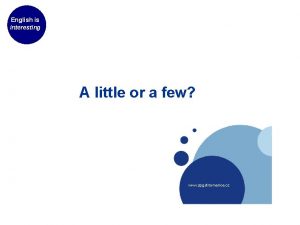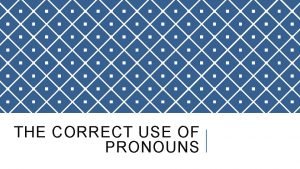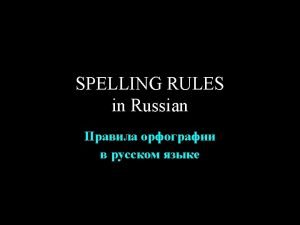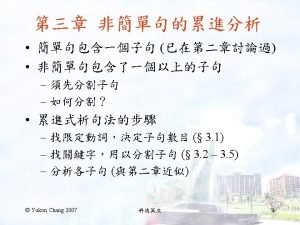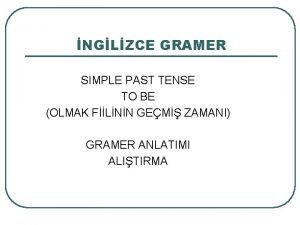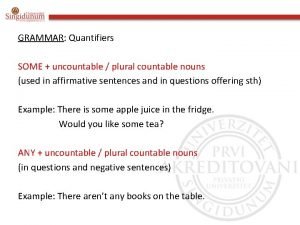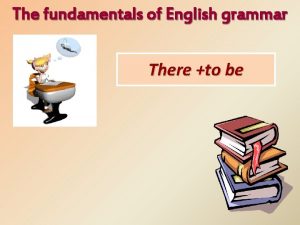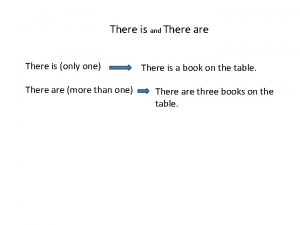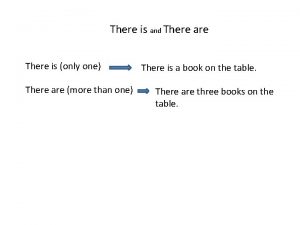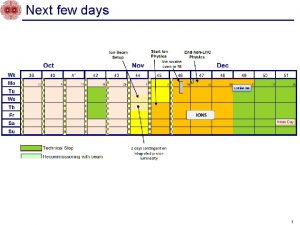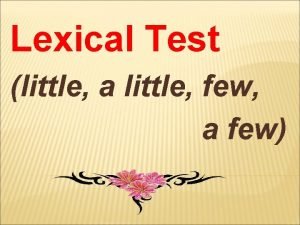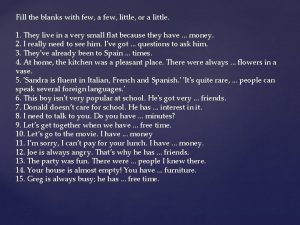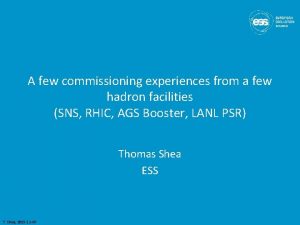LEARN THIS NOW There are only a few


































- Slides: 34

LEARN THIS NOW: There are only a few ways to connect neurons. Here are the major ways to do it, with example functions. 1: 1 (relay) exception is auditory system… Many: 1 (IN SENSORY SYSTEMS – GAIN, IN PERCETUAL SYSTEMS – COMPLEXITY) 1: Many (arousal)

Don’t You Just Love Neurons? ¢ Why doesn’t this creature have any neurons? ¢ Neurons are cells specialized for long-distance, rapid communication. ¢ Yes/No signals carried within neurons are electrical (Action Potentials) ¢ Yes/No signals passed between neurons are chemical (Neurotransmitters)

There are TWO general TYPES of neurons, as defined by the type of neurotransmitter they release. Excitatory ‘Offense’ ‘YES’ (example is GLUTAMATE) Inhibitory ‘Defense’ ‘NO’ (example is GABA)

A 2 D Sheet of Sensory Neurons (Yes/No Responses) In this silly example: these are ALL ‘excitatory’ excitatory neurons

Don’t You Just Love Neurons? ¢ Why are these guys so small (uh… generally)? ¢ Neurons needed a little help before they could move big ol’ me and you around ¢ To love neurons is to know GLIAL cells

Myelin ¢ ¢ ¢ Fatty glial cells that wrap themselves around axons Creates ‘insulation’ idea is to increase the speed of the neural impulse Allows increase in body size and a centralized brain It’s good for your brain to be a little ‘chubby’

Ohm’s Law V = IR Voltage = Current x Resistance The Amount of Push = The Amount of Flow x The Amount of Resistance to the Flow Note that the ‘amount of push’ (voltage) will influence how far an electrical signal (current) can be transmitted. Neurons operate at tiny voltages (think way, way less than a AAA battery) so you know already that they have tiny currents and low resistances. How can they send electrical signals from one end of your body to the other? They must have a trick up their sleeve!

Isn’t It Ionic? K+ Cl. Na+ Ca++ ¢ Electrical Activity in Neurons is IONIC. An ION is an atom having fewer/more electrons than protons. ¢ Thus, ions have electrical charge (+/-). ¢ However, regardless of their charge, they are also subject to entropy, like any other atom. ¢ That is, they will move from areas of high concentration to areas of low concentration (but, this requires that they be in a solution, like water). ¢ The direction of ELECTRICAL and CONCENTRATION GRADIENTS determines ion movement. ¢

Neurons Use Ions To Create Three Kinds of Potentials (i. e. , Voltages) Resting, Synaptic, Action

Voltage - A Charge Difference Across The Neuron’s Membrane Like ‘water pressure’ in plumbing ¢ Drives electrical current flow (ions) ¢ Some handy voltages to know: ¢ Lightning, ~billion volts l Wall Outlet, 120 volts l Car Battery, 12 volts l AAA Battery, 1. 5 volts l resting neuron, 0. 070 volts l Wow!

Neurons can run at low voltages because action potentials are regenerative The drawback is that regenerating electrical signals takes time BIG VOLTAGE Resting, Synaptic, Action

Meet The Potentials - Resting Dynamic Equilibrium: In layman’s terms, speedy thing goes in as speedy thing comes out. Repeat. Neurons use ‘ION Channels’, which sit in the cell membrane, to control the entry/exit of IONS Channel State K+ Open Na+ Closed Cl- Closed Ca++ Closed e c The voltage across the membrane is about -70 m. V

The Resting Potential This is our ‘baseline’ state positive e c outside e c Na+ closed e c K+ open Clclosed negative inside A- A- Channel State K+ Open Na+ Closed Cl- Closed Ca++ Closed

What Happens When We Open Na+ Channels? negative e c outside e c Na+ e c K+ Cl- positive inside A- A- Channel State K+ Open Na+ Open Cl- Closed Ca++ Closed

OVERVIEW: A simple 3 -step process… At rest, neurons possess a tiny negative voltage (-70 m. V), Resting Potential. 1. Chemical Signals Received 3. Chemical Signals Released On DENDRITES, neurotransmitters open ion channels to produce small positive or negative changes in voltage, Synaptic Potentials. 2. Electrical Signal Sent Positive Synaptic Potentials open ion channels in the AXON to produce a self-propagating reversal of the cell’s voltage (-70 / +30 / -70 m. V), Action Potentials. Information flows in only ONE direction.

Synaptic Potentials Are Of TWO General Types Example Excitatory Positive ‘YES’ -60 m. V (Resting) -70 m. V time Channel State K+ Open Na+ Open Cl- Closed Ca++ Closed Example Inhibitory Negative ‘NO’ -60 m. V (Resting) -70 m. V time Channel State K+ Open Na+ Closed Cl- Open Ca++ Closed

Meet The Potentials - Synaptic There are TWO general classes of receptors: Ionotropic and Metabotropic. The receptor at right is an Ionotropic receptor. Metabotropic receptors utilize a ‘second messenger’ to open the ion channel (see example below).

Transmitter-gated channels Na+ in, additive -50 m. V -70 m. V Voltage-gated channels Na+ in, K+ out, regenerative +30 m. V -50 m. V -70 m. V Resting, Synaptic, Action

Transmitter-gated channels Na+ in, additive -50 m. V -70 m. V Voltage-gated channels Na+ in, K+ out, regenerative +30 m. V If neurons were human devices, we’d use a big ol’ voltage to push the current -50 m. V all the way down the axon in one step -70 m. V Resting, Synaptic, Action

Transmitter-gated channels Na+ in, additive -50 m. V -70 m. V Voltage-gated channels Na+ in, K+ out, regenerative +30 m. V -50 m. V -70 m. V Nature’s approach is to use a series of tiny voltages (action potentials) to push the current in a series of small steps. Resting, Synaptic, Action

Transmitter-gated channels Na+, Cl- in, additive -50 m. V -70 m. V Resting, Synaptic, Action

+30 m. V Meet The Potentials: Action Potentials! -70 m. V At Rest + K OUT e c IN Peak of AP Back to Rest + Na + K + Na e c e c e c

Approaches Equilibrium for Na+ +30 m. V Rising Phase of AP Back to Equilibrium for K+ -50 m. V -70 m. V 0 1 2 3 4 msec Voltage-Gated Na+ Channels IN AXONS All-Or-None: Voltage Opens, Time Closes Refractory Period Channel State K+ Open Na+ Open Cl- Closed Ca++ Closed Falling Phase of AP Channel State K+ More Channels Open Na+ Closed Cl- Closed Ca++ Closed

+30 m. V The Action Potential -70 m. V 0 1. Rising Phase: Na+ Entry 2. Falling Phase: K+ Exit 3. The Na+/K+ pump restores ion concentrations 1 2 3 4 msec

The Action Potential +++++ A Chain Reaction Down The Axon +++++

The Action Potential +++++ A Chain Reaction Down The Axon +++++

Action Potentials in an Unmyelinated Axon

Action Potentials in an Myelinated Axon

Release the Hounds!. . . uh, I mean neurotransmitter

. . . zzzzzzz Calcium is Necessary and Sufficient for Neurotransmitter Release

lamro. N tsinog. A tsinogatn. A . .

Transmitter-gated channels Na+, Cl- in, additive -50 m. V There also agonist and antagonist drugs for ‘inhibitory’ neurotransmitters -70 m. V Resting, Synaptic, Action

Transmitter-gated channels Na+, Cl- in, additive -50 m. V There also agonist and antagonist drugs for ‘inhibitory’ neurotransmitters -70 m. V Resting, Synaptic, Action

Voltage-gated channels Na+ in, K+ out, regenerative STIMULUS-gated channels -50 m. V -70 m. V +30 m. V -50 m. V -70 m. V In Sensory Receptor Neurons, synaptic potentials are called ‘generator potentials’! They are triggered by STIMULI (energy or matter) instead of neurotransmitters.
 She is lucky she has few problems
She is lucky she has few problems Insidan region jh
Insidan region jh The committee debates or debate these questions carefully
The committee debates or debate these questions carefully Few, a few, little, a little exercise
Few, a few, little, a little exercise Complete the sentences. use the following words
Complete the sentences. use the following words A few ja few ero
A few ja few ero Kinesthetic learner
Kinesthetic learner How seedless plants reproduce
How seedless plants reproduce Why are there few examples of totem poles from before 1900?
Why are there few examples of totem poles from before 1900? Few fewfewf
Few fewfewf The main reason that there are relatively few invertebrates
The main reason that there are relatively few invertebrates Now i see it now you don't
Now i see it now you don't And i have learned too to laugh with only my teeth
And i have learned too to laugh with only my teeth Take only photos leave only footprints
Take only photos leave only footprints There is therefore now no condemnation
There is therefore now no condemnation There is only one god in hinduism
There is only one god in hinduism There are only two reciprocal pronouns. *
There are only two reciprocal pronouns. * Only one god jesus
Only one god jesus There is only one boss the customer
There is only one boss the customer Hinduism
Hinduism Why only 5 vowels
Why only 5 vowels There are only two things that are infinite
There are only two things that are infinite There is only zuul
There is only zuul There
There There is there are countable uncountable nouns
There is there are countable uncountable nouns There was there were ile ilgili cümleler
There was there were ile ilgili cümleler There is there are ejemplos
There is there are ejemplos There's and there are
There's and there are There isn't any burger
There isn't any burger An a some any
An a some any Exercising game
Exercising game What part of speech is open
What part of speech is open If there is no struggle there is no progress examples
If there is no struggle there is no progress examples Workbook es contable o incontable
Workbook es contable o incontable There is there are
There is there are
